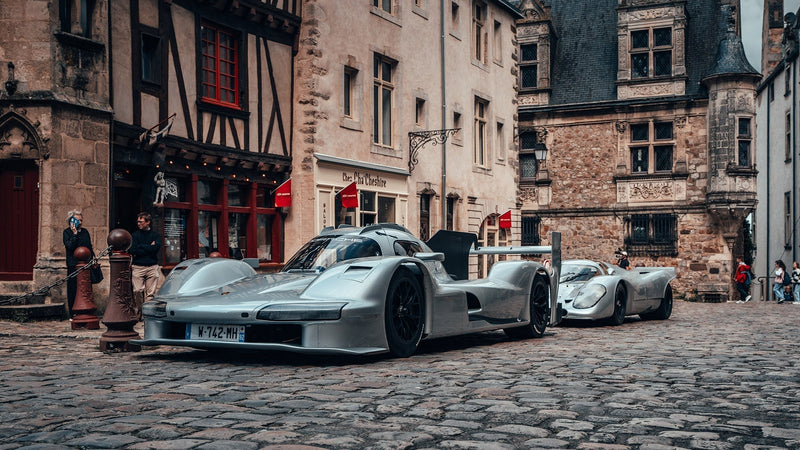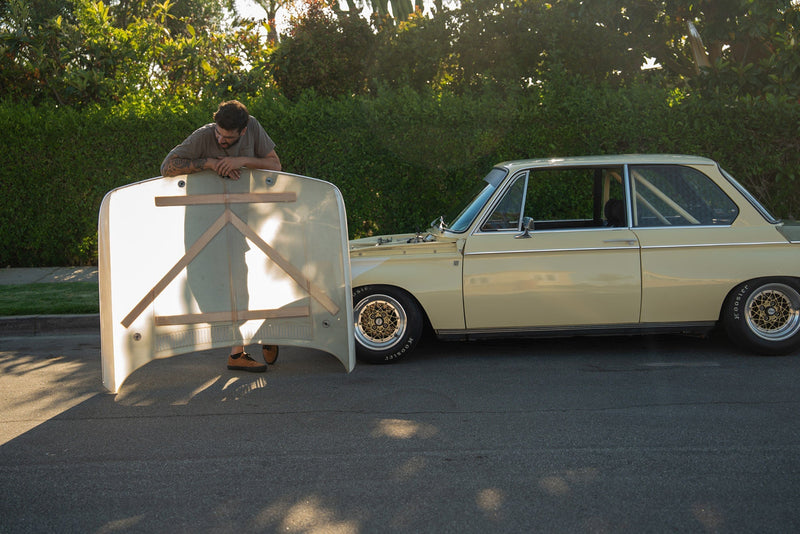Photography by Marco Annunziata
It may have been overshadowed in motorsport by its brother, the Coupé, but the Lancia Fulvia Sport, shaped by the legendary 100-year-old house of design that is Zagato, was surely the winner in the looks department. Created for performance on the road while the Coupé achieved excellence in rallying, the Sport boasted a more aerodynamic shape, evidenced in the fastback design and the piercing nose.
It was also a lightweight machine, and initial models were built with an all-aluminum body on a compact chassis, measuring just 13.5’ in length and 5.1’ wide. Perhaps most significantly for Lancia, which at this point was building most of its cars with an emphasis on engineering excellence and a price to match versus sales volume, the Fulvia Sport was the last of its kind.



Debuting at the 1965 Turin Motor Show, the two-door Lancia Fulvia Sport was designed by Zagato’s Ercole Spada, and the suits put their faith in it to the extent that the car became Lancia’s first real entry into the US market, even though at the time it practically matched the sales price of the ever popular Corvette.
The Fulvia Sport utilized the Coupé’s 1216cc V4, which delivered approximately 80bhp to the front wheels via a four-speed gearbox. The unusual Ettore Zaccone Mina-designed V4 hosted a single cylinder head thanks to its narrow angle of just 13 degrees, and was equipped with a dual-overhead camshaft valvetrain to improve airflow and combustion efficiency. Meanwhile, twin Solex carbs handled fuel and air mixing duties. In addition to its narrow V design, the engine was also positioned at an angle to achieve a lower hood line to improve aerodynamics, and was placed ahead of the front axle, directly above the transaxle.






After just 202 models were produced, a year later the first Fulvia Sport was supplanted by the Sport 1.3, which increased the motor’s bore to achieve a capacity of 1,298cc, which produced 89bhp at 6,000 rpm. This gave a 0-60mph time of around 13 seconds, with a top speed just shy of 110. Early versions of the Sport 1.3 continued with the all-aluminum body—as per this 1967 version which appears in the photographs—though later versions went with steel, though they retained the aluminum bonnet and doors.
The Sport featured a side-opening hood—later models changing to a more conventional front hinge—which was equipped with a functional scoop to feed the airbox which channelled directly into the cabin to keep occupants cool. While the rear windows on the two-door design couldn’t be opened to provide an outlet in the rear, an interesting feature is the rear window hatch, which, powered by an electric switch, lifts about an inch to enable through-draft. To access the trunk, the hatch can be fully opened to reveal a surprising volume of space for the car’s small stature.



The interior of the Sport is striking, mostly due to the Zagato-designed seats, which are large, secure, and well padded for a car of this size and purpose. The 1.3 version also upgraded the Sport to a three-seater, or a two-plus-one layout. The wooden steering wheel and dash continued Lancia’s quality construction, complete with white “piano key” electrical switches. Back outside, even the model name badge is significant for the beautiful, cursive script.
Behind the wheel, the Sport’s smoothness on the road demonstrates the tightness and general quality of the build. The drive feels planted, despite the 68% weight distribution over the front. The relatively strong torque figure—topping out at 85 foot-pounds at 5,100rpm—gives the Sport a backroad performance beyond what the motor’s capacity suggests, even compared to competing Italian marques of the day. Still, on winding roads, you’re unlikely to need higher than third gear.



In 1968, the 1.3S model pushed the pony count to 92, while also equipping the car with brake servos. That same year, a one-off Spider, two-seater variant of the Sport was presented at the Turin Motor Show. But, in a move which heralded the economies to come, it never reached full production.
Following further financial difficulties, Lancia was sold again in 1969, this time to FIAT, and the launch of the series two Lancia Fulvia Sport came a year later. Now with a five-speed gearbox and classed as a four-seater, the riveted aluminum panels were replaced with an all-steel body, welded to the monocoque to increase rigidity. The final and most significant development of the Sport was the launch of the 1600 in 1971, which borrowed the motor from the Coupé HF, Lancia’s rally champion. This boosted power to 115bhp—closer to 130 when tuned—with a top speed of roughly 120 mph. Just 800 examples of the 1600 model were built, with production of the Fulvia Sport ceasing altogether in 1972.


While the Sport was eclipsed by the Coupé in competition performance, it did achieve notable successes of its own. Squeezing out a reputed 153bhp from a 1600 engine, in 1969 two Sport specials, known as Sport Daytonas, competed at a high level. Their lightweight build and agile performance helped achieve a class win in the sports prototype category at the 24 Hours of Daytona, and 11th place overall.
In total, 7,000 Lancia Fulvia Sport were built, and while their value continues to increase it has never achieved the heights associated with other Zagato-designed classics, like Aston Martin’s DB4 (though that car does have significantly greater performance, and more traditionally pretty bodywork). In Europe, a high-priced Fulvia Sport could achieve mid-$60,000 equivalents, though more commonly it’s possible to pay half that for a example still in good, original condition.
It could be a unique addition to a burgeoning collection of Italian cars, for it’s not without provenance. The elegance of the Fulvia Sport’s design was supported by Lancia’s reputation at the time for the highest specification build, an ethos which ran through the company and its engineers. This approach wasn’t frivolous, but it wasn’t always profitable either, and it was one of the reasons for the company’s turbulent financial history. Following transfer of ownership to FIAT, many of the high specification, high price Lancia components were down-spec’d in a process known as decontenting. In this way, the Lancia Fulvia Sport can be considered the last real Lancia of the historic era.





















































